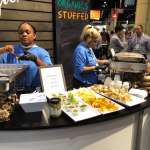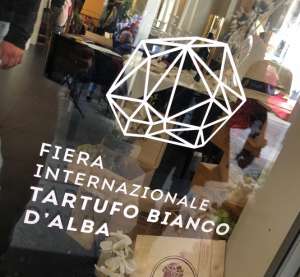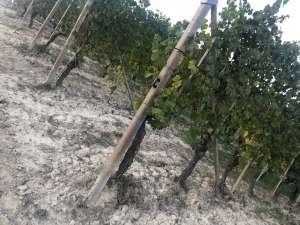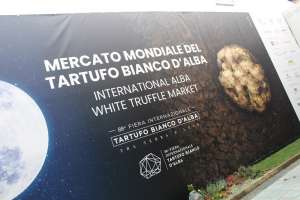Food incubators are not necessarily new. They’ve been called shared kitchens, culinary incubators, food hubs and more. Their growth grew out of the 2002 Farm Bill that allocated $27.7 million in grant funding to support value added food production and create Agriculture Innovation Centers. The idea was to help agriculture producers create greater ROI for their products in the form of value added consumer products versus selling commodities alone.
With competitive funding available agricultural co-ops and economic development companies around the U.S. jumped in and started creating shared food spaces. Everywhere from Detroit to Brooklyn, and places far and wide and in between sprung up to support this new kind of small business. Participants are caterers, bakers, food trucks, meal prep delivery companies and even manufacturers creating and launching new consumer products. Places like Union Kitchen in DC and The Hatchery in Chicago are just two of the hundreds of food accelerators around the U.S. that are helping entrepreneurs find success.
The premise is that a common shared space could bring together a wealth of tools and resources that are often cost prohibitive to individual startups. Things like warehouse space, office space, kitchen space, expensive equipment, and health and safety certificates to name just a few are things that can cost a startup hundreds of thousands of dollars. Other food incubators went deeper and provided resources for packaging, branding, legal, marketing and sales and even investor resources. And of course – the collaboration. A shared experience of running ideas past other makers in a shared space allowed innovators to test new ideas and work through challenges with others who may be experiencing similar challenges.
And incubators worked. They helped launch dozens of small business for individuals making salsa, baked goods, pet treats and more and foster local food economies. They’ve also helped launch fast growing national brands and new ideas like avocado gelato from RIPE, bone broth from Kettle & Fire and Brazi Bites, the Brazilian cheese bread bites seen on Shark Tank.
But it isn’t just communities who are supporting the future of food. Food manufacturers are also getting in on the trend and not only funding, but mentoring the next generation of food innovators in hopes of keeping their own brands fresh. Today, brands including Pepsi Co, Kraft Heinz, General Mills, Kellogg, Land O’ Lakes, Chobani and Johnson & Johnson all either own or fund food incubators.
It was more three or four years ago when I was turned on to the power of food incubators when walking the aisles at the Specialty Food Show. It seemed everywhere I looked was a new product idea that was part of a food incubator. Uniquely flavored honey, beef jerkys, gluten free snacks, interesting beverages, premium chocolates and more all had origins in a shared space. Heck it’s the first time I learned about savory and spicy yogurt – which are just now starting to find their way to market. And it seems nearly every week I’m now reading a story about an up and coming brand that got its start in a food incubator.
For those of us that work in the food space this is an exciting time. Big ideas often come from small spaces where rules, meetings, layers of management, timelines and budgets restrict us from taking unconventional risks. The more diverse and global our world is, the more exciting our food should be and it appears that food incubators are ready to show us the way.
As leaders in the food world, we should all find ways to mentor the next generation of food entrepreneurs that demonstrate a passion for the business that feeds the world. It might be surprising what it will ignite in you.
The post Why Food Incubators are the New Food Darling appeared first on Full Tilt Marketing.

 Seriously, where are the jerks in the produce industry? In an industry as competitive as produce, it’s shocking for me to see how eager people are to help one another, collaborate, and oh, show the new girl the ropes. After discussing this “nice” phenomenon with a colleague, I wondered if it might have something to do with the fact that even stiff competitors help each other out in a pinch. Someone who is a competitor today may be a customer tomorrow if you have what they need (and they’ve run out). No offense to my old software buddies, but I think I’ve found my home.
Seriously, where are the jerks in the produce industry? In an industry as competitive as produce, it’s shocking for me to see how eager people are to help one another, collaborate, and oh, show the new girl the ropes. After discussing this “nice” phenomenon with a colleague, I wondered if it might have something to do with the fact that even stiff competitors help each other out in a pinch. Someone who is a competitor today may be a customer tomorrow if you have what they need (and they’ve run out). No offense to my old software buddies, but I think I’ve found my home. So many of the booths at PMA were huge. Massive booth footprints, combined with massive hanging signs (seriously, did everyone have a hanging sign? It was like looking up in an overcrowded kite store) and massive display units all point to some serious investments in the show.
So many of the booths at PMA were huge. Massive booth footprints, combined with massive hanging signs (seriously, did everyone have a hanging sign? It was like looking up in an overcrowded kite store) and massive display units all point to some serious investments in the show.









 Applebee’s customers are seeking affordable and approachable food, “a pretty good meal at a pretty good price,” Cywinski stated. In addition to all-you-can-eat, the 2 for $20 value proposition was reintroduced with a beverage underlay.
Applebee’s customers are seeking affordable and approachable food, “a pretty good meal at a pretty good price,” Cywinski stated. In addition to all-you-can-eat, the 2 for $20 value proposition was reintroduced with a beverage underlay.
 ble. But what is not likely to change is consumers’ desire for both freshness and convenience.
ble. But what is not likely to change is consumers’ desire for both freshness and convenience. A couple months ago, my husband and I took a trip to Alba, Italy for the Fiera Internazionale del Tartufo Bianco, or the International White Truffle Festival. While first planning our trip, we were most excited about the wine – Alba is a central location for visiting Barolo and Barbaresco, regions producing fantastic wines of the same names. Then a friend told us about the truffle festival and we began to investigate. We were excited, but couldn’t have been fully prepared for what was in store.
A couple months ago, my husband and I took a trip to Alba, Italy for the Fiera Internazionale del Tartufo Bianco, or the International White Truffle Festival. While first planning our trip, we were most excited about the wine – Alba is a central location for visiting Barolo and Barbaresco, regions producing fantastic wines of the same names. Then a friend told us about the truffle festival and we began to investigate. We were excited, but couldn’t have been fully prepared for what was in store.
 The festival focuses on white truffles, a commodity prized as much for its imperviousness to cultivation as its unique flavor. However, it’s not just about truffles. Instead, it is a celebration of all the products of the region.
The festival focuses on white truffles, a commodity prized as much for its imperviousness to cultivation as its unique flavor. However, it’s not just about truffles. Instead, it is a celebration of all the products of the region.








 Food bloggers are on the front lines of the “what’s for dinner” 5pm reality of how food trends play out in practical application. Many of us have probably experienced trendy smoked cocktails, homemade condiments or culinary foam on our restaurant plates, but we’re unlikely to invest our time and resources in specialty equipment or complicated techniques to try these presentations at home.
Food bloggers are on the front lines of the “what’s for dinner” 5pm reality of how food trends play out in practical application. Many of us have probably experienced trendy smoked cocktails, homemade condiments or culinary foam on our restaurant plates, but we’re unlikely to invest our time and resources in specialty equipment or complicated techniques to try these presentations at home.  Mocktail mania, which ranked the highest in emerging drink trends, began to arise last year especially among those Millennials as well as other consumers choosing to drink responsibility and forgo the hangover (nonalcoholic drinkers make up a third of consumers). Bars have begun to recognize an opportunity to serve craft drinks that have all the artistry and flavors of a traditional cocktail. Whether it’s adding a splash of lavender and lemon to Grenadine and bitters or mixing pomegranate and berries to sparkling water, mocktails are becoming cool and imaginative, a mixologist’s dream with the bonus of looking like real cocktails while tasting delicious.
Mocktail mania, which ranked the highest in emerging drink trends, began to arise last year especially among those Millennials as well as other consumers choosing to drink responsibility and forgo the hangover (nonalcoholic drinkers make up a third of consumers). Bars have begun to recognize an opportunity to serve craft drinks that have all the artistry and flavors of a traditional cocktail. Whether it’s adding a splash of lavender and lemon to Grenadine and bitters or mixing pomegranate and berries to sparkling water, mocktails are becoming cool and imaginative, a mixologist’s dream with the bonus of looking like real cocktails while tasting delicious. Bloggers also noted Butterfly Pea Flower in their comments. Native to Thailand, this flowering plant is most widely used in tea. Bon Appetit praised its color appeal “as like seeing a glow stick turn from a boring translucent-gray tube into a glimmering neon cylinder for the first time. Just add water and it’s a deep midnight-cobalt blue. Squeeze in lemon, and it transforms into a rich violet.” But it’s not just the brightly lit color that makes Butterfly Pea Flower exciting, when steeped it releases antioxidants similar to green tea and it’s also known to help reduce inflammation in the body.
Bloggers also noted Butterfly Pea Flower in their comments. Native to Thailand, this flowering plant is most widely used in tea. Bon Appetit praised its color appeal “as like seeing a glow stick turn from a boring translucent-gray tube into a glimmering neon cylinder for the first time. Just add water and it’s a deep midnight-cobalt blue. Squeeze in lemon, and it transforms into a rich violet.” But it’s not just the brightly lit color that makes Butterfly Pea Flower exciting, when steeped it releases antioxidants similar to green tea and it’s also known to help reduce inflammation in the body. Craft sodas also known as artisanal, specialty or small-batch soda ranked third. While regular sodas have been declining in sales due to negative perceptions of artificial ingredients and health risks. Craft sodas have been on the rise. According to USA Today, craft sodas are capturing share by hyping premium and natural ingredients, creative flavors, limited runs, unusual packaging or their local roots. Using fruits, spices and herbs, craft sodas offer consumers a variety of refreshing flavor combinations from grapefruit, chamomile and cardamom to citrus cucumber and Jasmine tea ginger ale.
Craft sodas also known as artisanal, specialty or small-batch soda ranked third. While regular sodas have been declining in sales due to negative perceptions of artificial ingredients and health risks. Craft sodas have been on the rise. According to USA Today, craft sodas are capturing share by hyping premium and natural ingredients, creative flavors, limited runs, unusual packaging or their local roots. Using fruits, spices and herbs, craft sodas offer consumers a variety of refreshing flavor combinations from grapefruit, chamomile and cardamom to citrus cucumber and Jasmine tea ginger ale.







